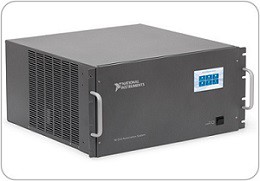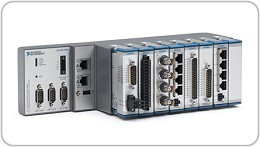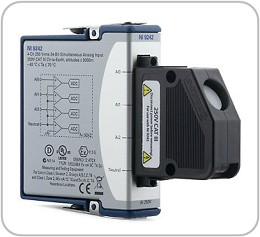What is the NI Grid Automation System?
Overview
Contents
- Overview of the NI Grid Automation System
- Core Controller
- Analog Inputs
- Digital and GPS Inputs
- Open Architecture for Customization
- Additional Resources
Overview of the NI Grid Automation System
The NI Grid Automation System is a programmable intelligent electronic device (IED) designed to simplify substation monitoring and upgrades while improving measurement visibility. It does what fixed-function devices on the market can’t do because the functionality is defined by software.
The personality that ships with the system makes the device function as a PMU that meets the latest C37.118.1a-2014 standard. Out of the box, the NI Grid Automation System helps bring high speed, high quality phasor data to grid operators.
The NI Grid Automation System is designed to help grid operators better measure the state of the grid
Core Controller
The core technology platform for the NI Grid Automation System is CompactRIO, a high performance embedded controller combined with modular input and output. The rugged, metal enclosure of the NI Grid Automation System houses the CompactRIO chassis, six C Series input modules, a power supply and a touch display. All of the core components are available through the NI catalog or freely available on the open market through 3rd party suppliers. The cRIO-9068 CompactRIO chassis features a dual core 667 MHz ARM Cortex-A9 processor mated to Artix-7 FPGA fabric from Xilinx. The chassis has 8 slots for C Series modules and all of the data from the modules is routed through the FPGA to the ARM processor for high performance signal processing and control signals.
Each NI Grid Automation System is powered by a CompactRIO embedded controller inside
Analog Inputs
NI has close to 40 years of experience in processor-based measurements and the NI Grid Automation System incorporates this expertise along with some of the latest components in analog signal conversion. Analog inputs on the NI Grid Automation System use 24-bit analog to digital converters that sample at up to 50,000 samples/second. The combination of high resolution with high speed sampling is important for measurements like higher order harmonics. Additionally, sampling data as accurately as possible is good for future analysis needs that are currently unknown.
- NI 9242 - Voltage Input
- NI 9238 - Precise voltage measurement for current analog signal path
The NI 9242 module was designed to connect to 120/240 VAC potential transformers
Digital and GPS Inputs
The NI Grid Automation System has 8 channels of high voltage DC for substation binary status inputs. The digital inputs on the device work up to 250VDC and have a ratio-metric crossing threshold set at approximately 2/3 of the supply voltage input.
Digital and GPS Modules:
- NI 9467 (GPS)
- NI 9437 (Digital)
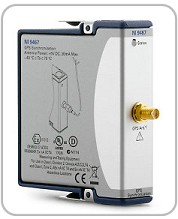 | 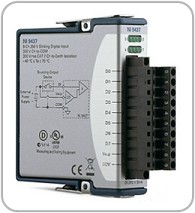 |
| The GPS module and onboard FPGA clock help synchronize data to within ±100ns | The NI 9437 digital module has a ratio-metric crossing threshold to adjust to 48VDC, 110VDC, and 220VDC inputs. (one per bank) |
Open Architecture for Customization
The NI Grid Automation System was designed for software defined functionality and many of its features are fully programmable. The NI PMU personality that ships with the NI Grid Automation System is available as an open LabVIEW project for users to download and customize. The operating system running on the controller is NI Linux Real-Time. This is the same deterministic version of Linux that NI ships on all of the latest CompactRIO and CompactDAQ embedded controllers. Developers have access to the operating system and can install a variety of packages from the Linux community to enhance the functionality of the device.
The NI Linux Real-Time OS enables code integration from the Linux ecosystem
Additional Resources
- Learn about Energy solutions from NI
- Learn about the C Series Voltage Input Module, C Series Synchronization Module, and C Series Digital Module, which are all included in the Grid Automation System.
